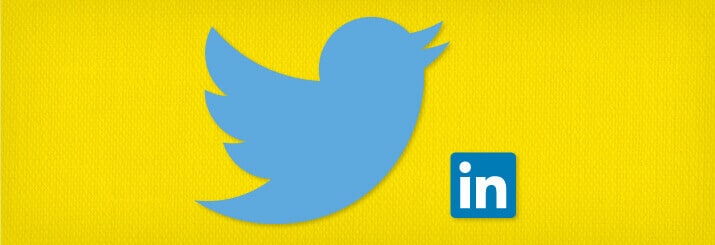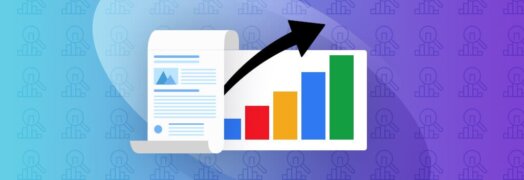LinkedIn Sponsored Updates have owned the B2B social advertising primarily due to the industry’s comfort level with the social platform. That isn’t to say it doesn’t provide fantastic targeting options, such as the ability to target based on industry, seniority and job function. But another traditionally B2C social platform is slowly gaining headway in the B2B advertising space. Twitter, while slow to implement advertising on its site, is becoming worth the wait.
Last month, we ran two separate advertisements on LinkedIn and Twitter promoting the same piece of content. This was our first attempt at running both simultaneously and the results surprised us.
Audience
For this content offer, we were targeting B2B marketing professionals in the United States. Pretty broad but since the white paper focused on content marketing, we also wanted to include keywords related to that topic.
We set our audience targeting similar to most of our previous campaigns, adding content marketing specific keywords to the “skills” section. After running the campaign for a full week, LinkedIn provided us the following results:
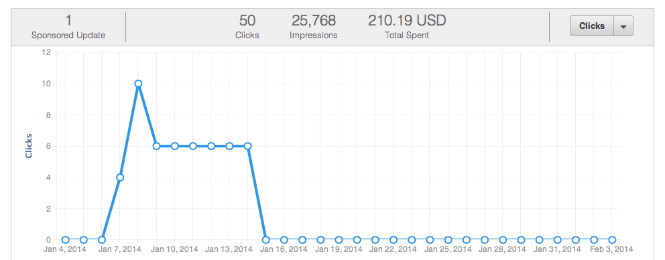
50 clicks over the course of a week to an audience size of a little over 410,000 is a successful campaign for us. For our company, the leads we generate from one advertisement is quality over quantity, and if 10% of these conversions are valuable prospective customers then this ad did its job. Here is our evaluation:
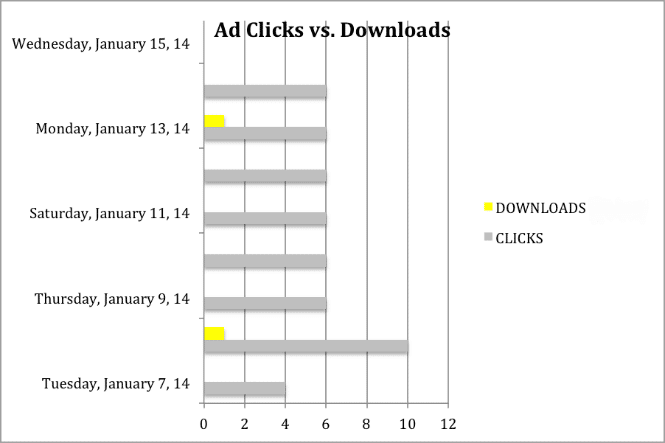
After reviewing that week, we discovered that of the 50 clicks to the LinkedIn, only two downloads occurred from that source. Bummer. We’ve certainly had more successful ads run on LinkedIn, and one can debate that the content, ad copy and/or targeting keywords used could be modified to increase conversion. Regardless, this was a pretty low conversion rate, which rarely happens in our LinkedIn advertising experience.
As a newbie to Twitter advertising, we established some common keywords we thought the Twittersphere would be searching for—heavy on the B2B slant to avoid drawing too many unqualified prospects.
Because promoted tweets was a new tactic, we set the campaign to only run for four days just to manage performance. Twitter provided the following analytics:
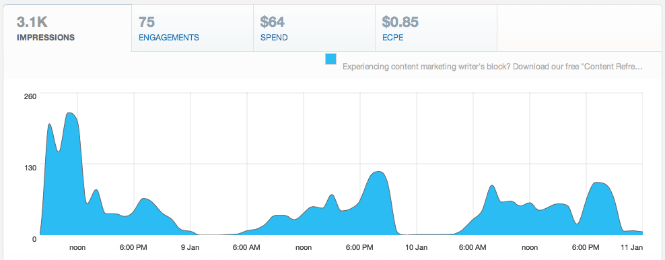
This is when a conversion tracking tool – such as VisiStat, Google Analytics or Twitter’s own conversion tracking – comes in handy. Since Twitter users have a multitude of ways to interact with a tweet (e.g. clicking the Twitter profile, retweets, replies, tweet expands, etc.), Twitter charges “per engagement” rather than “per click.” While difficult to track, cost per engagement is relatively low. The ad overall received an engagement rate of 2.42%, which falls within Twitter’s recommended success range of 1 – 3%.
After pulling data from our conversion tracking tool, we discovered even better news:
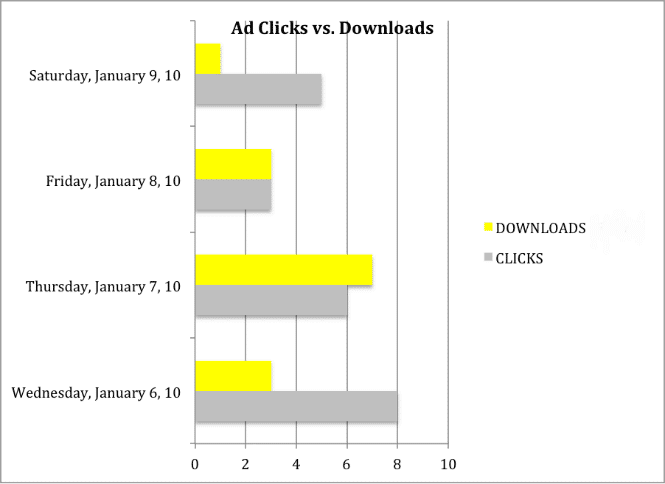
Once all the “engagements” were filtered out to valuable clicks, we found the Twitter ad brought a total of 22 clicks to the landing page over the course of the four days. Of the 22 clicks, 14 of those visitors downloaded our guide. Even better, almost half of the clicks were valuable prospective contacts for our sales funnel. Pretty impressive for an ad that only ran four days.
At the end of the day, LinkedIn will still prove to bring valuable connections to grow our business. But for B2B companies hesitant to start similar advertising on Twitter due to B2C concerns, you’re missing out on an untapped audience.
